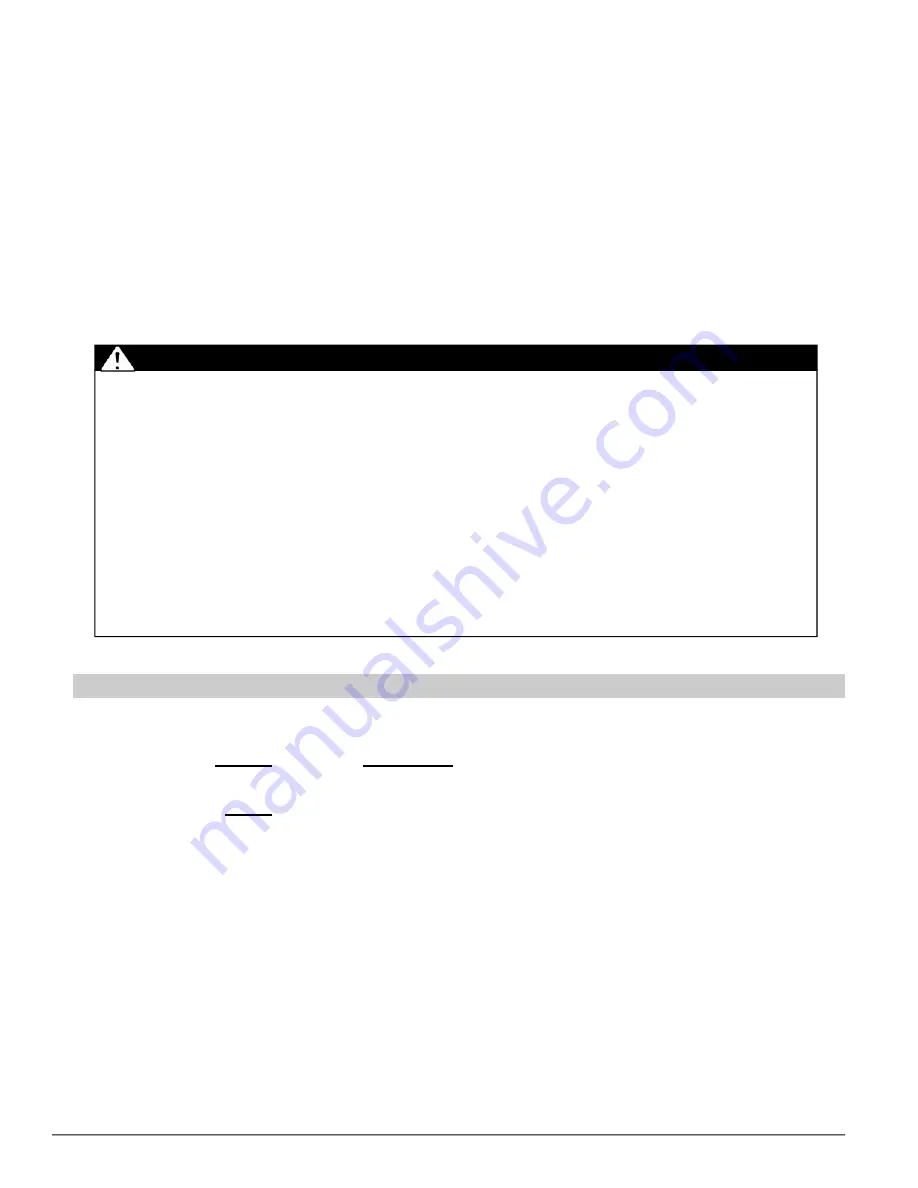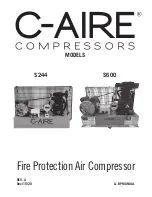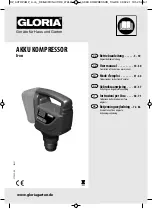
CO Poisoning:
Exhaust from engine contains carbon monoxide, a poisonous gas that can cause carbon
monoxide poisoning and possible death if inhaled. ONLY run air compressor OUTDOORS and at least 20 feet
from the home, away from windows, vents and air intakes, to allow proper ventilation. If you start to feel sick,
dizzy, or weak while using the air compressor, shut off the engine and get to fresh air RIGHT AWAY.
Injection Injury
: High-pressure air stream can pierce skin and underlying tissues, leading to serious injury
and possible amputation. Such an injection injury can result in blood poisoning and/or severe tissue damage.
Flying Debris
: High-pressure air stream can cause flying debris and possible surface damage.
Electric shock
: Operating equipment in wet conditions or near water can cause electric shock.
Not For Breathing Air:
compressors are NOT designed, intended, or approved for supplying breathing air. No
compressed air should be used for breathing unless air is treated in accordance with applicablestandards.
Fire/Explosion
: Sparks from air powered tool heads or attachments can ignite fuel or other flammable liquids
or vapors in the vicinity. Exceeding the maximum pressure for air tools or
attachments could cause them to
explode.
Burns:
Compressor pump, engine and discharge tubing are hot surfaces that can cause
burn injuries. Detailed safety information about these hazards appears throughout this manual.
WARNING: SPECIAL HAZARDS
Gasoline Stationary Air Compressor
(For Outdoor Use only)
This belt-driven compressor has a 2-stage 2-cylinder pump, an engine with cast iron cylinders
for long life, and a compact design rated for 175 maximum PSI. Its continuous-duty rating
ensures long-lasting performance, and its cast iron pump head ensures superior heat
dissipation. Lift eyes are provided for lifting or tying down.
Read and understand this Owner’s Manual completely before using and keep this manual for
review. Failure to properly set up, operate, and maintain this compressor in accordance to this
manual could result in injury or death to operator or bystanders.
Equipment Protection Quick Facts
Inspect Upon Delivery:
FIRST! Inspect for missing or damaged components. See
“Initial Set-
Up”
section for where to report missing or damaged parts.
Add Engine Oil:
Engine is shipped
without oil
. See engine manual for instructions on
capacity and viscosity recommendations.
Check Pump Oil:
Pump is shipped with oil. Check the pump oil level before starting. See
“
Preparing for Operation
”
section of this Owner’s Manual for capacity and viscosity.
Use Mechanical Lifting Equipment:
Compressor is shipped on a pallet and is too heavy to
handle manually. Use proper lifting equipment for unloading and moving to installation site.
Lifting eyes are provided.
Run Pump Unloaded for Break-in Period:
Before initial use, open ball valve and run
compressor for 20 minutes to break in pump parts.
Follow Maintenance Schedule:
Engine, pump, air filter, and tank require periodic inspection
and servicing to keep compressor functioning efficiently. See “
Maintenance Schedule
Summary
” for frequency of servicing.
WWW.TMGINDUSTRIAL.COM
P02/27
Toll Free:1-877-761-2819



































